
Click Here for Full Screen Image - Click Here to Download Image
 |  |  | 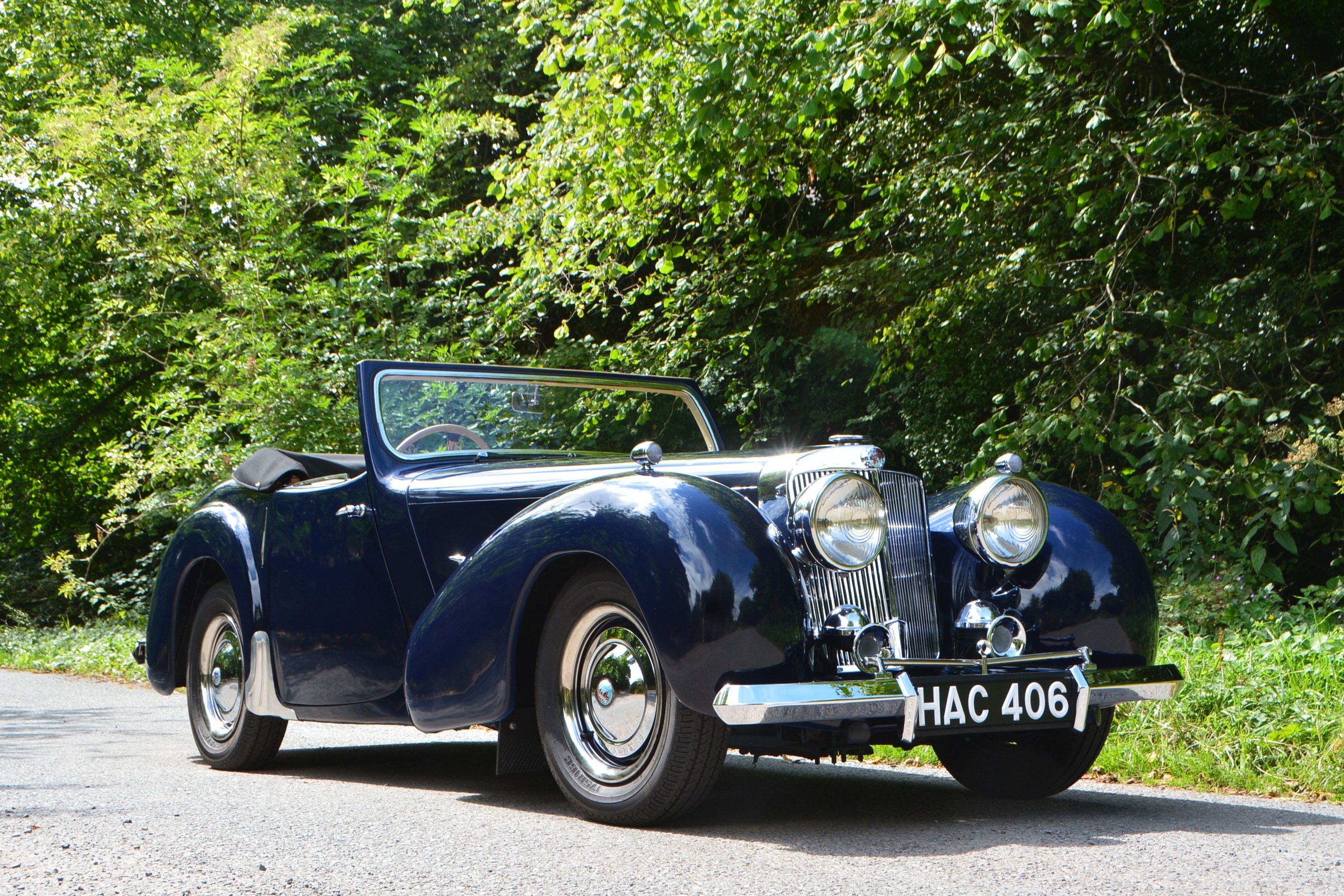 |  | |||||
 |  | 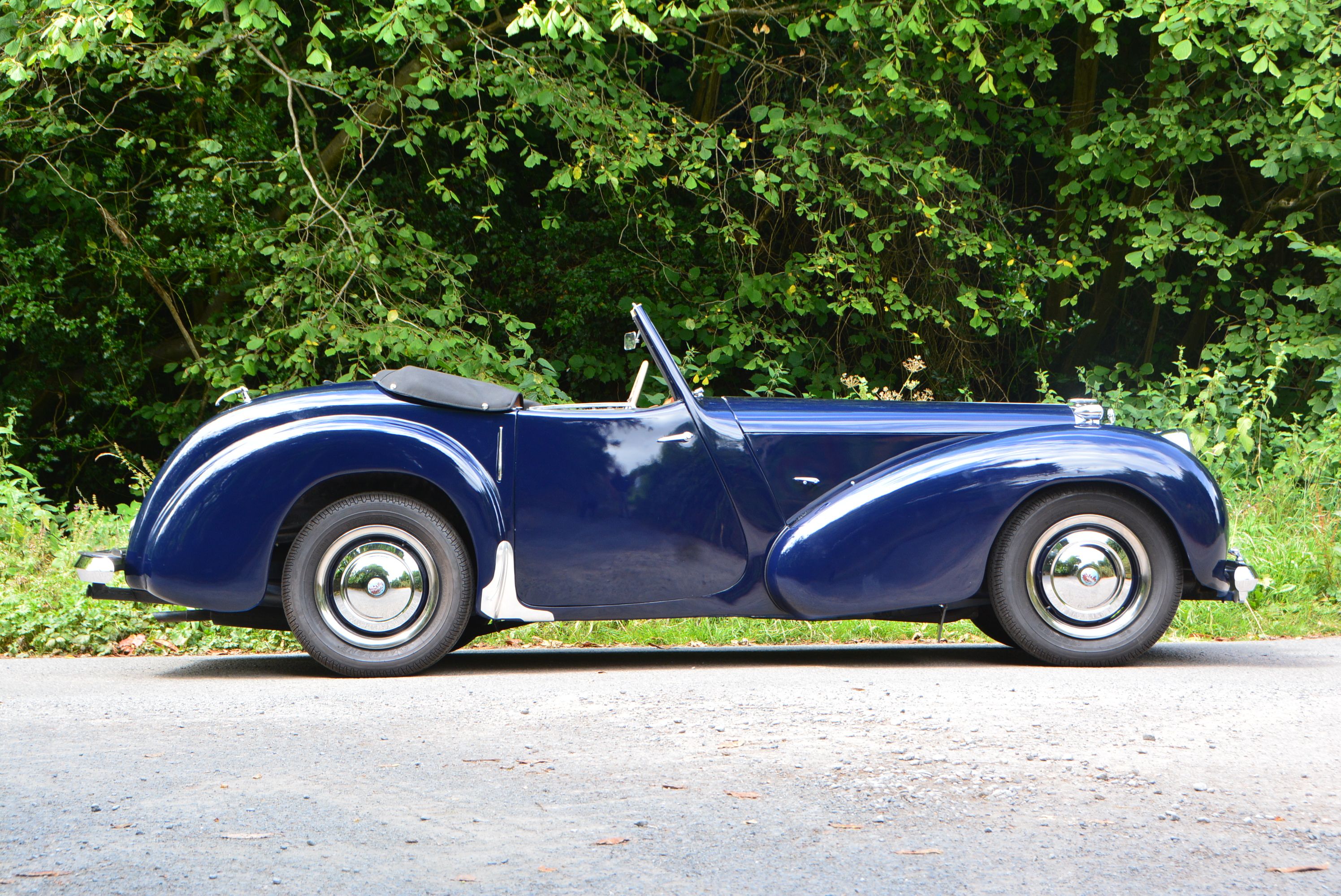 |  |  | |||||
 |  |  |  |  | |||||
 | 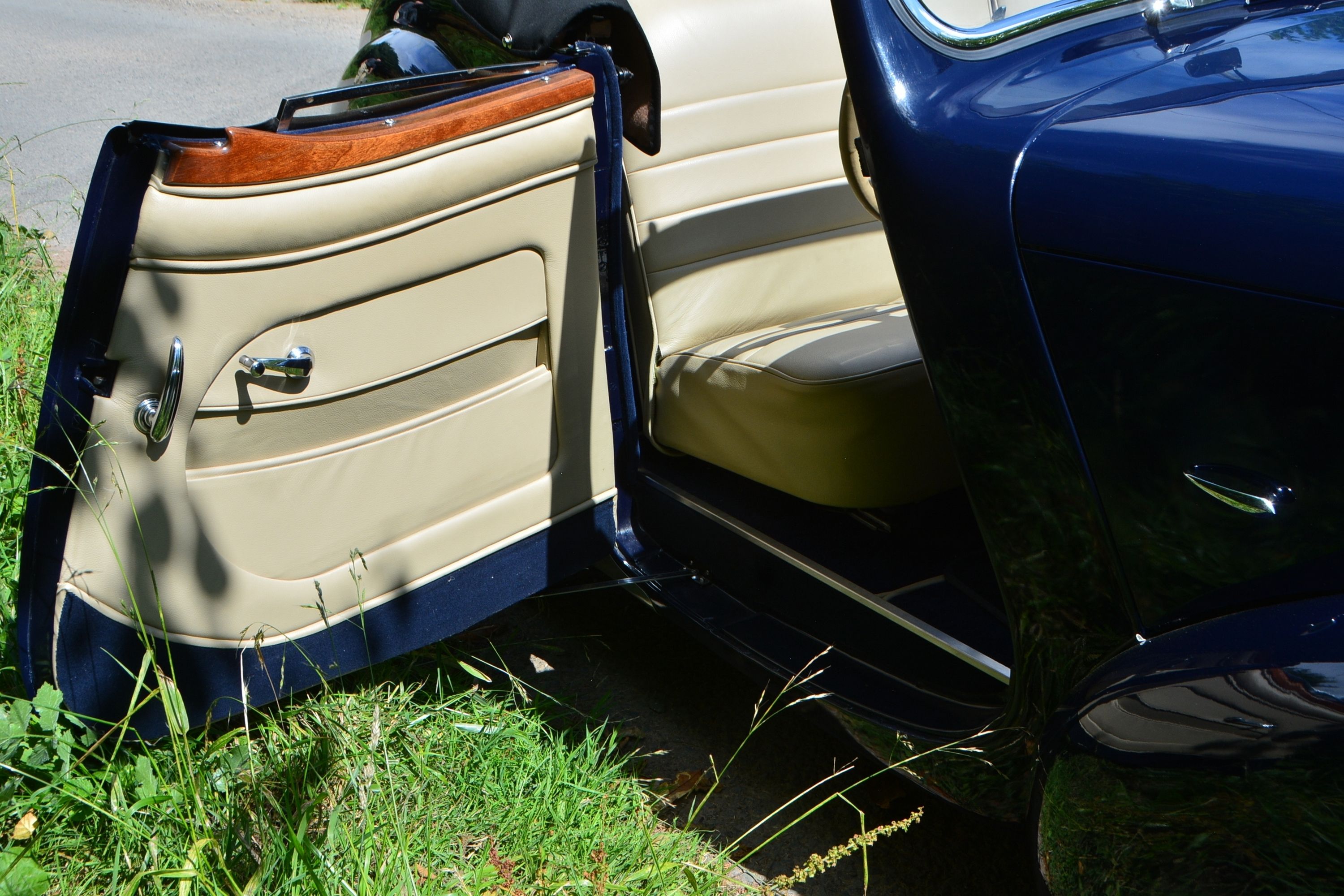 |  |  |  | |||||
 |  |  | 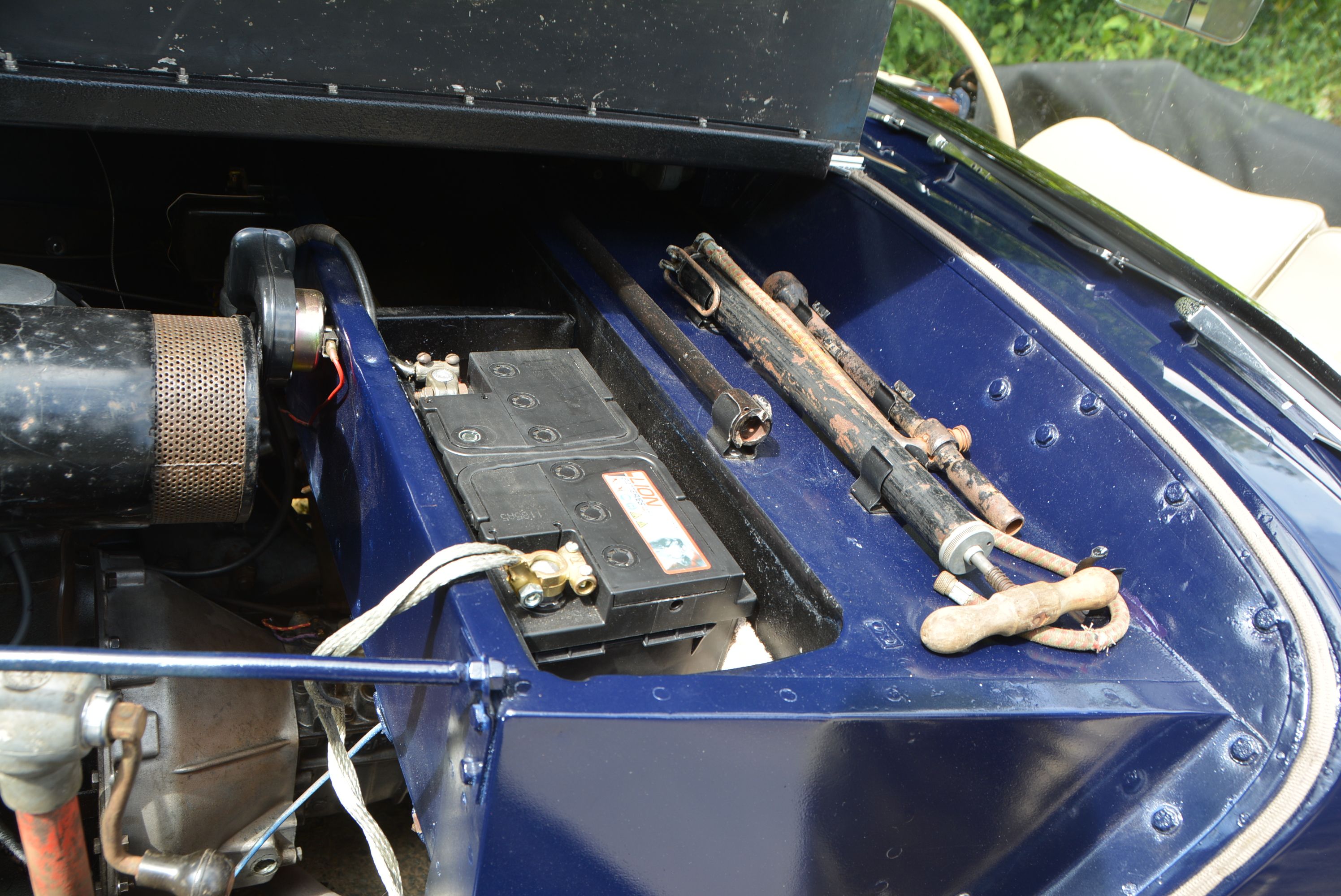 |  | |||||
 |  | 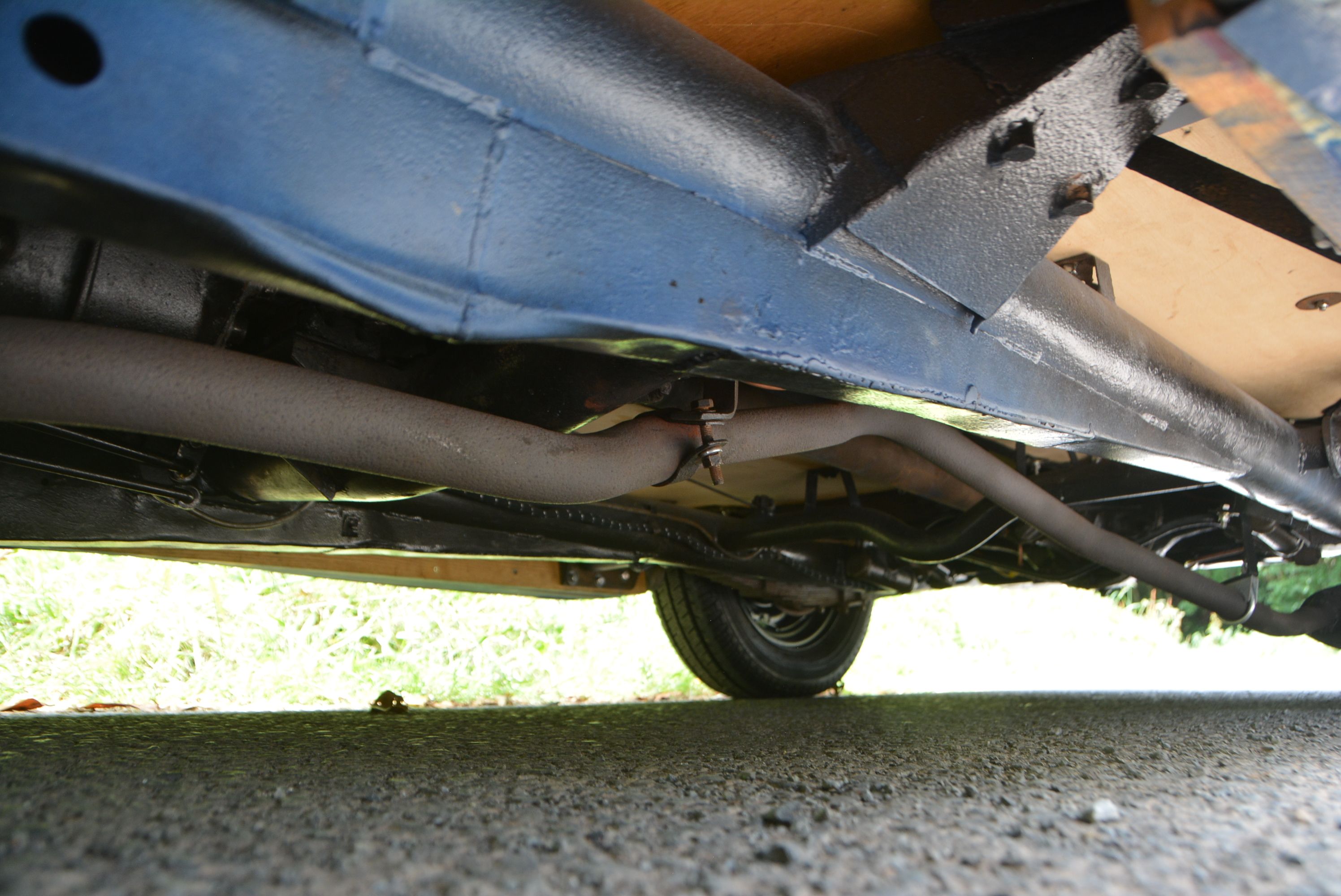 |  |  | |||||
 |
| Lot number | 105 |
|---|---|
| Hammer value | £22,000 |
| Description | Triumph Roadster 1800 |
| Registration | HAC 406 |
| Year | 1948 |
| Colour | Royal Blue |
| Engine size | 1,776 cc |
| Chassis No. | TRD2327 |
| Engine No. | TDR2335 |
| Documents | V5C; buff logbook; restoration invoices and photos; owner's club correspondence |
The first post-war car from Triumph Motor Company, the Roadster was produced from 1946 to 1948. Initially equipped with a 65bhp Standard 1800cc engine, it was superseded by a 68bhp 2-litre version in 1948.
Styled by Frank Callaby and Arthur Ballard, with mechanical design by Ray Turner, the Roadster was intended as a rival to Jaguar, whose cars had also used Standard engines in the pre-war period.
Post-war steel shortages meant that the swooping bodywork was built from aluminium using rubber press tools that had only just stopped churning out panels for the wartime Mosquito fighter bomber. The chassis was hand-welded from steel tube and featured transverse leaf sprung independent suspension at the front and a live axle with half elliptic springs at the rear. The rear track was considerably narrower than the front. Brakes were hydraulic and drive was via a four-speed column-change gearbox with synchromesh on the top three ratios.
The front bench seat could accommodate three at a squeeze and additional room for two was provided by a dickey seat in the rear with its own folding windscreen and a stepped rear bumper to aid entry and exit. A riot of generous curves, the styling was certainly distinctive, although "more toadster than roadster" was how one critic unkindly described it. Tested by Autocar in 1947, top speed was found to be 75mph and 0–60mph took 34.4 seconds.
Famously driven by John Nettles in the 1980’s BBC crime drama Bergerac, just 4,501 Roadsters were made of which just over half had the 1.8-litre engine, making these elegant roadsters rare and sought after today.
First registered in Warwickshire in July 1948, HAC 406 was acquired by our vendor about five years ago in a pretty sorry state, having been off the road for at least 30 years. A retired engineer, he set about a total nut-and-bolt restoration which was to take four years to complete and cost well over £20,000.
Naturally this has included a full chassis and body restoration with new ash frame sections as required, although we are told that all the aluminium outer panels proved salvageable and now look wonderful in their Royal Blue paintwork. Once pulled apart, the engine was also found to be in remarkably good nick so it was carefully reassembled and now runs beautifully, being very quiet with healthy 60psi oil pressure. The column-change gearbox was not so good and has been fully rebuilt and treated to a new clutch.
The wiring loom was renewed along with all the usual perishable parts, the interior retrimmed in caramel leather with refurbished woodwork and a new double duck hood fitted with a glass rear screen. Even the original trafficators now function perfectly although flashing indicators have also been discreetly fitted along with a detachable LED brake light in concession to modern driving conditions.
Documentation includes an album of restoration photos, various invoices, correspondence from the owner’s club, a modern V5C and a buff logbook from the 1960s. A quantity of useful spares will also be made available to the winning bidder by separate negotiation if desired.
Performing beautifully when we were treated to a test drive on what was one of the hottest days of the summer, this gorgeous ‘matching numbers’ Roadster is one of the nicest we have seen.